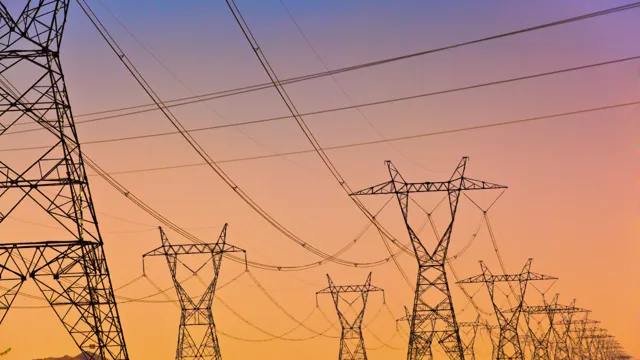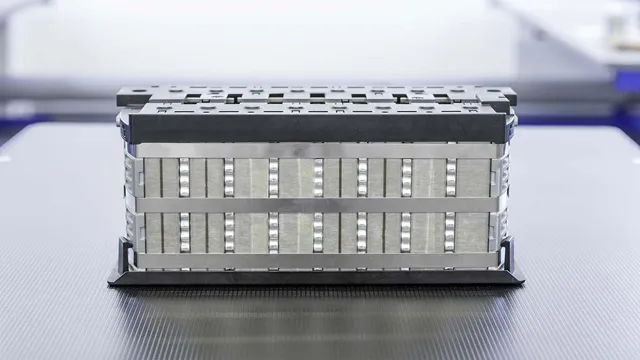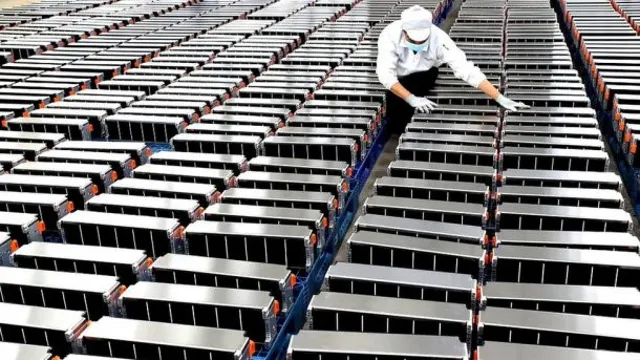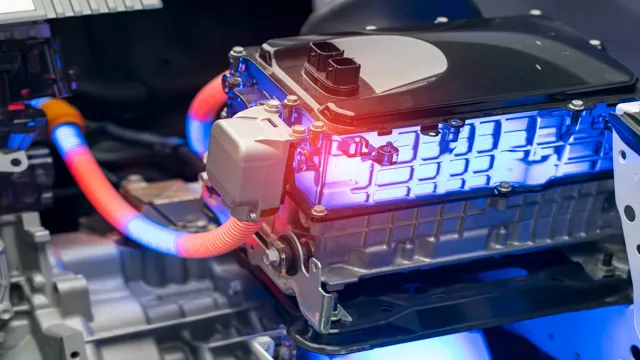Revolutionizing Cambodia’s Energy Landscape with Used Car Batteries: An Eco-Friendly Solution
When you think of car batteries, you probably think of their primary role in starting engines. But in Cambodia, these essential components serve a different purpose: providing electricity to remote communities. Thanks to innovative technology, car batteries can now be re-purposed to power homes and businesses, bringing light and connectivity to areas without access to a traditional power grid.
This unique use of car batteries not only offers an affordable and sustainable solution to Cambodia’s electricity problem but also highlights the creative ways in which communities can leverage existing resources to solve pressing issues. In this blog, we’ll explore how Cambodia’s innovative use of car batteries for electricity is transforming lives and changing the energy landscape for the better.
Electricity Demand
Cambodia has a unique approach to electricity demand, with many people turning to car batteries as a power source. In areas where there is no electricity grid, people often use car batteries to power up their homes and small businesses. This isn’t a new concept, though.
It started during the Cambodian civil war, where car batteries were used to power up radios and other communication devices. Later, it became a common practice in rural areas. This method is not only cost-effective but also accessible and convenient for many people.
However, it’s worth mentioning that it’s not the best solution concerning efficiency and environmental sustainability. It’s essential to consider alternative methods such as solar power to achieve a more sustainable and cleaner energy system.
High Demand and Limited Access to Electricity in Cambodia
High Demand for Electricity in Cambodia Cambodia is a developing country with a high demand for electricity due to the growth in population and industrialization. But the country has limited access to electricity, and many households lack a stable power supply. According to reports, only around 40% of Cambodian households have access to electricity, which is mainly concentrated in urban areas, while rural communities are still struggling with basic needs.
This has caused the country to face challenges in sustaining its infrastructure and economic growth, hindering the quality of life for its citizens. Despite having rich natural resources such as hydropower, solar, and wind energy, Cambodia still struggles to develop sustainable electricity solutions that meet the growing demands. It is essential to increase investments to overcome these challenges and improve the livelihoods of Cambodian people.
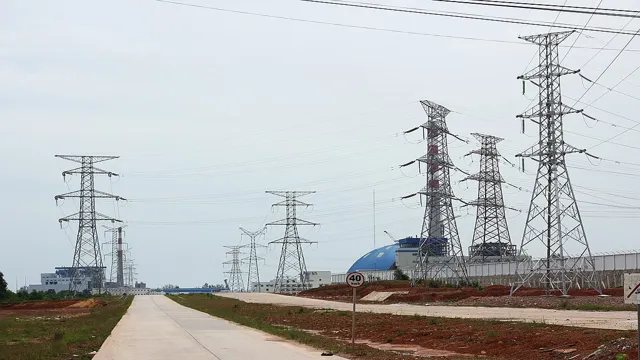
Solutions and Innovation
Electricity demand is a growing concern among individuals and governments worldwide. As populations increase and technology continues to advance, the need for electricity grows. However, meeting this demand can be challenging, particularly considering the negative environmental impact of traditional energy sources such as coal and oil.
To address this issue, many are turning to renewable sources such as solar and wind. By harnessing the power of the sun and wind, we can meet our energy needs sustainably and without causing further harm to the environment. Another solution that’s gaining popularity is energy storage.
As battery technology continues to improve, we can store excess energy generated by renewable sources and use it during times of high demand, reducing our reliance on traditional energy sources. Additionally, smart grids are being developed to manage and distribute energy more efficiently, allowing us to better match supply and demand. It’s clear that innovative solutions are necessary to meet our growing electricity demand sustainably, and there are plenty of options available to us.
Car Batteries as a Solution
Car batteries can be a sustainable solution for power shortages in rural areas of Cambodia. This is because they offer a reliable, cost-effective way of storing electricity. The use of car batteries for this purpose has gained popularity in recent years, with more and more people realizing its benefits.
By repurposing these batteries previously used in cars, they are able to provide energy for lighting, small appliances, and other household needs. Additionally, solar panels can be used to recharge these batteries, making it a renewable energy solution. While this may not be a long-term solution, given the limited lifespan of batteries, it does provide a temporary answer to the energy crisis issue in areas with limited access to electricity.
With the proper education and implementation of sustainable practices, car batteries can be an effective way of addressing energy poverty in rural Cambodia.
Collection and Distribution
Car batteries are often overlooked when considering waste reduction, but they can actually be a valuable solution. Collection and distribution of used car batteries is crucial in reducing their impact on the environment. Many cities have recycling programs in place for used batteries, but awareness and accessibility can be improved.
By taking the extra step to properly dispose of old batteries, individuals can make a significant impact on reducing hazardous waste. Additionally, recycled batteries can be repurposed for other industries, such as renewable energy storage. It’s important to remember that even small actions can make a big difference, and properly disposing of car batteries is a simple way to contribute to a more sustainable future.
So next time you’re considering tossing an old battery, think about its potential for repurposing and take the necessary steps to properly recycle it.
Battery Charging Stations
As electric cars become increasingly popular, one of the biggest challenges is finding a reliable way to recharge their batteries on the road. That’s where battery charging stations come in. With a network of these stations, electric car drivers would be able to recharge their cars quickly and easily, reducing range anxiety and allowing them to travel more freely.
But how do these stations work and where do they get their power from? One solution is to use car batteries as a source of power. By repurposing used car batteries, charging stations can tap into an existing source of energy and give these batteries a second life. This not only provides a more sustainable solution but also helps reduce the cost of building new charging stations.
So the next time you see a charging station on the road, remember that the power to recharge your electric car might be coming from repurposed car batteries.
Partnerships and Support
Partnerships and Support When it comes to finding solutions for environmental issues, partnerships and support are key. One promising solution is the use of car batteries in buildings to store renewable energy. This process would involve taking batteries from old electric vehicles and repurposing them to store energy from solar panels or wind turbines.
These batteries are generally considered to be spent once they have lost 20% of their original capacity, but they still have a significant amount of useable life left in them. By giving these batteries a second life, we can reduce waste and provide an affordable option for energy storage. Companies like Nissan are already embracing this concept by partnering with energy companies to repurpose used car batteries.
As we continue to develop partnerships and support for this innovative solution, we will be one step closer to creating a more sustainable future for generations to come.
Benefits and Impact
Using old car batteries to provide electricity in Cambodia is a game-changer for many families in the countryside. This low-cost solution is not only an affordable way to access electricity, but it also has a positive impact on the environment. By reusing old batteries, we are reducing waste and pollution in the environment.
These batteries are typically not recycled, and toxic chemicals can seep into the ground and pollute the water supply. Thanks to this sustainable solution, Cambodian communities can access power without relying on expensive energy sources that are difficult to maintain or repair. Reusing batteries is also a great way to reduce overall electricity costs and is a more eco-friendly alternative to using fossil fuels.
Overall, the initiative to use car batteries for electricity in Cambodia is a practical and sustainable solution that proves to have both short-term and long-term benefits for the environment and the local population.
Affordability and Accessibility
Affordability and accessibility are vital components of any service or product, and the same holds true for healthcare. The benefits and impact of making healthcare more affordable and accessible are immense. When healthcare services are made affordable, more people can access them, leading to better health outcomes, a reduced burden on emergency services, and a healthier population.
Moreover, providing affordable healthcare services can greatly benefit low-income families and communities, who are often neglected due to high costs of medical consultations and treatments. On the other hand, if healthcare services are not easily accessible, it can lead to delayed treatment, reliance on emergency services, and avoidable suffering for patients. Hence, making healthcare services more affordable and accessible should be a priority for healthcare providers and policy-makers.
By making healthcare services more affordable and accessible, we can break down barriers to healthcare access, ensuring that everyone has access to quality healthcare, regardless of their background or financial status.
Environmental Impact
Nowadays, it’s more important than ever to focus on the environmental impact of our actions. One of the most significant benefits of being environmentally conscious is the reduction in our carbon footprint. By reducing our reliance on fossil fuels and other non-renewable resources, we can significantly decrease the amount of harmful greenhouse gases emitted into the atmosphere.
Another benefit is the conservation of natural resources, such as water and land. By using these resources more efficiently and reducing waste, we can help preserve the planet’s natural beauty for future generations. However, it’s also important to recognize that our impact on the environment goes beyond just local changes.
Our actions can have a global impact on climate and ecosystems, which is why it’s vital to prioritize sustainability in all aspects of our lives. Taking small steps like reducing plastic waste, conserving energy, and supporting eco-friendly companies can go a long way in making a meaningful impact on the environment. By working together, we can make a positive change and ensure a brighter future for all.
Future Possibilities
Cambodia is a country that is looking to explore alternative ways of generating electricity, and one possibility that has been gaining some attention is the use of car batteries. Since the country is still developing, and many areas are still lacking access to electricity, this approach could prove to be quite affordable and convenient. By repurposing old car batteries, Cambodia could find a way to provide electricity to people in remote areas, without having to build new infrastructure.
The process would involve using solar panels to charge the batteries during the day, and then using that stored energy to power homes and businesses at night. While this is still an experimental approach, it could pave the way for more sustainable and eco-friendly ways of generating power. Furthermore, this approach could also lower the cost of electricity for Cambodian citizens, which has been a major concern in the past.
Overall, it remains to be seen if this approach will be successful, but it certainly has the potential to change the way electricity is produced and distributed in Cambodia.
Conclusion
In conclusion, Cambodia’s use of car batteries as a source of electricity is a perfect example of innovative sustainability in action. While it may sound unconventional, it is a practical solution for a country with limited access to traditional power sources. It just goes to show that with a little ingenuity, we can find solutions to complex problems and make a positive impact on both our communities and the environment.
So next time you see a discarded car battery, don’t just throw it away – think of all the possibilities it holds for a brighter and more sustainable future!”
FAQs
How does Cambodia use car batteries to generate electricity?
In rural areas of Cambodia, where access to electricity is limited, people use car batteries as a source of power. They connect the batteries to inverters, which convert the DC power from the batteries into AC power that can be used to power electronic devices and appliances.
Is using car batteries for electricity common in Cambodia?
Yes, it is common in rural areas where access to grid electricity is limited. According to a report by the World Bank, around 32% of the Cambodian population does not have access to electricity, and car batteries are often used as a substitute.
What are the environmental implications of using car batteries for electricity in Cambodia?
The use of car batteries for electricity in Cambodia can have negative environmental implications. Car batteries contain toxic chemicals like lead and sulfuric acid, and improper disposal of used batteries can lead to soil and water contamination. However, many organizations are working to promote safe battery disposal and recycling practices in Cambodia.
Are there any alternatives to using car batteries for electricity in Cambodia?
Yes, there are several alternative energy sources that can be used to generate electricity in Cambodia, including solar power, wind power, and hydro power. These sources of energy are renewable and do not produce toxic waste like used car batteries. However, their installation and maintenance can be expensive, which is a barrier for many Cambodians living in rural areas.
